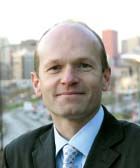Head for Barcelona or Leipzig for cardiovascular updates
Traditionally, the European Society of Cardiology's annual congress has generated limited interest among radiologists, largely because the meeting has focused primarily on areas other than imaging.

Traditionally, the European Society of Cardiology's annual congress has generated limited interest among radiologists, largely because the meeting has focused primarily on areas other than imaging. The program for this year's event tells a different story, however. Cardiac imaging and computers is one of nine main tracks, and between 30 Aug. and 1 Sept., no fewer than 27 sessions will address imaging.
If ever an excuse were needed to visit Barcelona, the venue for ESC 2009, this comprehensive coverage provides it. There will be several clinical sessions about CT, as well as presentations about imaging the vulnerable patient, ultrasound-directed gene and drug therapy, and multimodality imaging in valvular heart disease.
Cardiovascular imaging is at a fascinating stage of its development. Rapid technological advances have occurred over the past decade and are being implemented widely by the imaging community. The early promise of MRI and CT is finally being realized at the clinical level, and the area continues to evolve. New equipment and techniques are enhancing the ability of cardiologists, radiologists, and others to detect, diagnose, and intervene successfully in suspected cases of cardiovascular disease.
The issue is no longer whether images of a given anatomical or functional problem can be obtained, but rather which technique or modality should be used, Prof. Frank Rademakers, from the department of cardiovascular diseases at Leuven Catholic University in Belgium, told delegates at last year's ESC congress. Other important challenges are the inherent turf battles in cardiovascular imaging and the push from industry to sell the newest and brightest, he noted.
“It is time that we start focusing again, not on what we can image, but on what we need to image to improve patient diagnosis and outcome,” he said. “We also have to create a new subspecialty of the cardiovascular ‘imager' who relays a clinical question into a stepwise approach to the different modalities and integrates the information from the various modalities in a coherent answer to the clinicians. This requires broad consensus building.”
The European Society of Cardiac Radiology is holding its annual conference in early October in Leipzig, Germany. The ESCR is celebrating its 10th anniversary, and in this edition of DI Europe, its president, Prof. Michael Rees, outlines the key issues facing cardiac radiologists. Also in this issue, two of our Editorial Advisory Board members, Prof. Thoralf Niendorf and Prof. Gabriele Krombach, describe their experiences with cardiac MR. Niendorf has just taken up taken up a new post as professor and chair of ultrahigh field MRI at the Charité University in Berlin. We wish him every success.
GE HealthCare Debuts AI-Powered Cardiac CT Device at ACC Conference
April 1st 2025Featuring enhanced low-dose image quality with motion-free images, the Revolution Vibe CT system reportedly facilitates improved diagnostic clarity for patients with conditions ranging from in-stent restenosis to atrial fibrillation.
The Reading Room Podcast: Current Perspectives on the Updated Appropriate Use Criteria for Brain PET
March 18th 2025In a new podcast, Satoshi Minoshima, M.D., Ph.D., and James Williams, Ph.D., share their insights on the recently updated appropriate use criteria for amyloid PET and tau PET in patients with mild cognitive impairment.